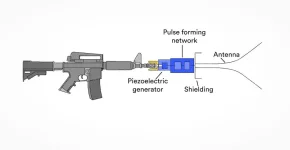- Joined
- Feb 24, 2013
- Messages
- 39,280
- Reaction score
- 23,062
- Gender
- Undisclosed
- Political Leaning
- Conservative
We are seeing a very dramatic seismic shift in the last few years in war technology. Drone technology is rather ubiquitous, and very easy to militarize to the point where drone warfare is almost as common in poor countries as it is in technologically advanced countries.
We see evidence every day of simple drones defeating modern armor to the point that Tanks are now under threat in much the same was the longbow and gunpowder ended the use of plate armor.
"Air superiority" won't be a thing is a few years when drones will have more capability in air support than a manned aircraft.
This gets even more frightening when you consider the strides made in AI and sensory equipment. A country with even a modest budget can fund a system much like the swarm technology currently used for flying art displays, but with every drone a bomb, and broad spectrum sensory cameras that would allow the country to send out a few thousand coordinated drones at night to hunt all humans in a given area and kill them.
The speed that this technology is taking over is pretty astounding.
My biggest long term fear is lasers. Lasers have the capacity to be far more devastating than even nuclear weaponry.. but drones are the short term threat that really has me worried.
We see evidence every day of simple drones defeating modern armor to the point that Tanks are now under threat in much the same was the longbow and gunpowder ended the use of plate armor.
"Air superiority" won't be a thing is a few years when drones will have more capability in air support than a manned aircraft.
This gets even more frightening when you consider the strides made in AI and sensory equipment. A country with even a modest budget can fund a system much like the swarm technology currently used for flying art displays, but with every drone a bomb, and broad spectrum sensory cameras that would allow the country to send out a few thousand coordinated drones at night to hunt all humans in a given area and kill them.
The speed that this technology is taking over is pretty astounding.
My biggest long term fear is lasers. Lasers have the capacity to be far more devastating than even nuclear weaponry.. but drones are the short term threat that really has me worried.



